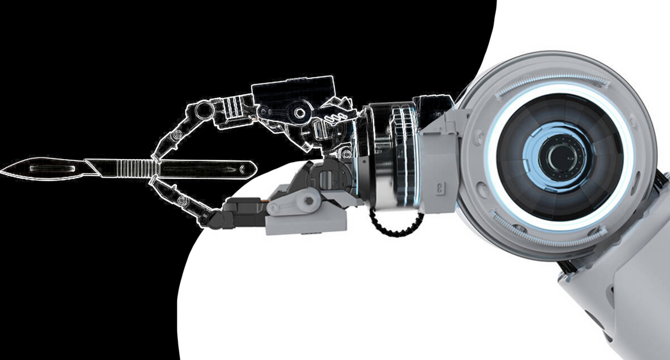Robotics News
The Robot Report
1M
143

Walmart, Wing launch drone delivery in 5 more cities
- Walmart, in collaboration with Wing Aviation, expands drone delivery service to five new cities: Atlanta, Charlotte, Houston, Orlando, and Tampa.
- Walmart aims to redefine retail by utilizing drone technology to offer faster and more convenient shopping experiences for customers.
- With over 150,000 completed drone deliveries since its launch in 2021, Walmart plans to provide thousands of products within 30 minutes to customers' doorsteps.
- In partnership with established drone providers, Walmart ensures faster and more efficient drone delivery services operating within FAA guidelines up to a range of 6 miles.
Read Full Article
8 Likes
The Robot Report
1M
376

RoboBusiness 2025 call for speakers ends June 12
- WTWH Media is seeking presentations for RoboBusiness 2025, to be held on Oct. 15-16 in Santa Clara, with a deadline for speaker proposals set for June 12.
- Tracks for presentations include Physical AI Forum, Humanoids, Field Robotics, Enabling Technologies, Design & Development, and Business insights.
- Last year, Sergey Levine of Physical Intelligence keynoted RoboBusiness 2024.
- Alongside the event, there will be opportunities for investors, startups, and sponsors to engage through various activities and competitions.
Read Full Article
22 Likes
IEEE Spectrum
1M
215

Image Credit: IEEE Spectrum
Navigating the Dual-Use Dilemma
- Open-source technology developed in the civilian sector has the potential for military applications or misuse, raising concerns across engineering fields.
- The dual-use potential of open-source technology presents challenges in balancing innovation with security.
- The accessibility of open-source technology to various actors, including the military and criminals, highlights the risks involved.
- The robotics field faces dual-use risks due to the repurposing of technology for military or harmful purposes.
- Platforms like Arxiv and Github have played a crucial role in accelerating robotics research and innovation through open access.
- The democratization of knowledge in robotics also poses risks, as technology can be easily misused for malevolent purposes.
- Openly available knowledge, designs, and software can enhance weapons systems and make robotics vulnerable to cyberattacks.
- The robotics community lacks specific regulations and guidance on addressing dual-use risks associated with open diffusion of work.
- A roadmap for responsible robotics includes areas such as education, incentives, moderation, and red lines to navigate the dual-use dilemma.
- Balancing security and openness in robotics is crucial to prevent misuse and foster responsible innovation in the field.
Read Full Article
12 Likes
Medium
1M
210

Image Credit: Medium
Interview with XMAQUINA: Decentralized Access to Humanoid Robotics and Physical AI
- XMAQUINA aims to democratize access to robotics, automation, and related technologies through a DAO structure, focusing on Decentralized Physical AI (DePAI).
- The initiative allows individuals to invest in smart machines collectively and benefit from their work, facilitated by blockchain technology to ensure fairness and transparency.
- XMAQUINA was founded in 2023 to address economic exclusion due to AI and robotics, offering a decentralized solution for ownership, governance, and benefits from automation.
- Recent milestones include securing shares in a top robotics company, launching a DAO portal for community involvement, and planning a token generation event for the Deus Token.
Read Full Article
12 Likes
Discover more
Embedded
1M
417

Sensor Fusion in Humanoids – How Humanlike Robots Energize Automation
- Humanoids, a new breed of robots, are emerging in automation to enhance efficiency and productivity across industries like manufacturing, healthcare, and customer service.
- Equipped with advanced capabilities like precision, mobility in three-dimensional space, and rotational movement, humanoids are designed to perform tasks typically done by human workers.
- These robots can mimic human movement and structure, working tirelessly without breaks to improve output in factories and warehouses.
- Integrating various sensors like vision, touch, proximity, and environmental sensors enables humanoids to interact effectively with their surroundings.
- Humanoids differ from regular robots by their lifelike appearance and ability to perform diverse tasks autonomously with speed and accuracy.
- Humanoids are anticipated to revolutionize automation, with a projected market value of $38 billion by 2035, driven by AI advancements and cost reductions.
- Leading humanoid manufacturers include Tesla, Figure AI, Agility Robotics, Boston Dynamics, and Sanctuary AI, with Hyundai acquiring Boston Dynamics to focus on robotics and smart mobility.
- Design challenges for humanoid robots include high system integration, reliability, and cost reduction, as they require sophisticated components and mechanisms to operate effectively.
- Companies like Mercedes-Benz, BMW, and Tesla are actively testing and deploying humanoid robots in manufacturing environments to optimize production processes.
- Beyond manufacturing, humanoids are being explored in retail and household assistance, highlighting their potential to become versatile companions in various settings.
Read Full Article
25 Likes
Marktechpost
1M
201

VeBrain: A Unified Multimodal AI Framework for Visual Reasoning and Real-World Robotic Control
- Multimodal Large Language Models (MLLMs) are enhancing robotic capabilities by enabling machines to perceive, interpret, and act within their environments.
- The VeBrain framework aims to unify vision, reasoning, and physical interaction for improved robotic control by addressing the limitations of previous VLA models.
- VeBrain integrates multimodal understanding, spatial reasoning, and robotic control into a cohesive system, outperforming previous models across various benchmarks.
- The research signifies a significant step towards autonomous and intelligent robotics systems that can handle complex tasks and environments with high reliability.
Read Full Article
12 Likes
The Robot Report
1M
251

Siemens launches enhanced motion control portfolio for basic automation applications
- Siemens AG launched an enhanced motion control portfolio featuring SINAMICS servo drive systems and the new SIMATIC S7-1200 G2 controller for basic automation applications.
- Key features of the portfolio include enhanced processing power, support for up to 31 PROFINET devices, integrated motion control technology objects, advanced safety features, and NFC capability for wireless access to diagnostic and device data.
- The system offers a range of power options, including the SINAMICS S210 servo drive system with power ratings up to 7 kW and flexible configuration options for single axes, coordinated axes, and simple kinematics.
- The system comprises three key innovations: SINAMICS S200 and S210 servo-drive systems, SIMATIC S7-1200 G2 controller, and compatible SIMOTICs servomotors, designed for motion control and machine tool applications.
Read Full Article
15 Likes
The Robot Report
1M
103

Beewise brings in $50M to expand access to its robotic BeeHome
- Beewise Inc. closed a $50 million Series D funding round for its AI-powered BeeHome, bringing its total raised to nearly $170 million.
- Bee pollination is crucial for the ecosystem and food security, with bees facing challenges like climate change, pesticides, and pathogens.
- Beewise's BeeHome uses AI and precision robotics to provide autonomous care to bee hives, improving hive health and crop yields.
- The funding will support Beewise's market expansion and research efforts to save bees and ensure global food supply security.
Read Full Article
6 Likes
Unite
1M
237

Image Credit: Unite
ChatGPT’s Memory Limit Is Frustrating — The Brain Shows a Better Way
- The article discusses the frustration encountered by ChatGPT users due to the memory limit issue.
- The problem lies in the tedious memory management process when the limit is reached.
- Currently, users either have to delete memories one by one or wipe them all together.
- The memory cap seems arbitrary, hindering ChatGPT from being a knowledgeable assistant in the long term.
- Human memory processes, like consolidation and prioritization, are suggested as a better model for AI memory management.
- Human brains efficiently store and recall information by compressing and filtering details over time.
- The suggestion is for AI to automatically summarize and prioritize memories, similar to how human memory works.
- Implementing a more adaptive memory system for AI could lead to better user experiences and continuous learning capabilities.
- By adopting principles of human cognition in AI memory systems, a more powerful and personalized AI experience can be achieved.
- The goal is to have AI that intelligently grows and learns over time, akin to the adaptability of human memory.
Read Full Article
14 Likes
The Robot Report
1M
112

Oxipital AI and Schmalz extend partnership for automated picking
- Oxipital AI and J. Schmalz GmbH have extended their partnership to integrate advanced machine vision technology for inspection and picking with robotic fingers and vacuum end-of-arm tooling.
- The collaboration aims to deliver next-generation robotic grasping solutions for increased operational efficiency, reduced labor reliance, and consistent production in the food and beverage industry and beyond.
- Oxipital AI focuses on providing AI-enabled machine vision for product quality inspection and robotic guidance, enabling customers to achieve automation in critical industries.
- Schmalz, a global market leader in vacuum industrial automation, aims to enhance its robotic grasping solutions by integrating Oxipital AI's vision technologies, offering more capable and higher-performing solutions.
Read Full Article
5 Likes
Unite
1M
435

Image Credit: Unite
Stopping AI from Spinning Stories: A Guide to Preventing Hallucinations
- AI technology is transforming various industries, offering efficiency and productivity gains, but it is not without flaws and can make errors known as 'AI hallucinations'.
- The occurrence of AI hallucinations, estimated to be between 1% to 30% in large language models, poses risks such as legal consequences and customer dissatisfaction, emphasizing the need for careful selection of AI tools.
- AI hallucinations can occur due to flawed data inputs, similar to the game of 'telephone,' where misinformation gets perpetuated through the system.
- Accuracy is crucial for customer-facing businesses relying on AI tools, as incorrect responses can damage reputation and customer loyalty.
- Dynamic Meaning Theory highlights the need for better alignment in interpreting responses between users and AI systems to avoid misunderstandings that lead to hallucinations.
- Enterprise AI applications benefit from industry-specific data for improved performance and should undergo rigorous testing to prevent hallucinations before deployment.
- Businesses should prioritize AI tools that are well-trained, tested, and capable of learning from proprietary data, aiming to enhance customer interactions and experiences.
- Both AI developers and users must be mindful of context and language nuances to minimize the occurrence of hallucinations, ensuring successful AI implementation.
- Careful consideration and diligence are essential in selecting AI tools that add value to operations without compromising accuracy or customer satisfaction.
- The responsibility lies on both solution providers and buyers to ensure effective AI implementation that minimizes errors and maximizes the benefits of AI technology.
Read Full Article
26 Likes
Unite
1M
184

Image Credit: Unite
Business Software and the Urgency of Adopting Agentic AI
- Software as a Service (SaaS) transformed enterprises by delivering tools online via subscription model, leading to vertical SaaS with industry-specific functionalities.
- Agentic AI represents a new era in enterprise software, with autonomous agents analyzing data, making decisions, and orchestrating workflows in real-time.
- These AI agents operate without human prompts, have individual goals, and can focus on tasks like sales, customer service, or manufacturing changes.
- Gartner projects that a third of enterprise software applications will integrate agentic AI by 2028, highlighting its growing importance.
- Survey results show that 83% of IT leaders consider AI agents crucial for competitiveness, with 96% planning to increase AI deployments in the next year.
- Agentic AI aims to enhance productivity and efficiency in the digital realm, bridging the gap between personnel and product to drive organizational success.
- Price models for agentic AI are evolving towards 'per task' or value-based approaches, emphasizing measurable results and productivity enhancements.
- Choosing software vendors now requires evaluating reliability, alignment with company goals, and accountability in decision-making for responsible AI usage.
- Addressing accountability concerns, organizations must consider legal and compliance issues, risk mitigation, and protocols for managing rogue AI agents.
- To prepare for adopting Agentic AI, businesses are advised to reevaluate tech stacks, involve diverse leaders in decision-making, and establish policies for safe AI usage.
Read Full Article
11 Likes
TechCrunch
1M
421

Image Credit: TechCrunch
XRobotics’ countertop robots are cooking up 25,000 pizzas a month
- XRobotics has developed a countertop robot named xPizza Cube that applies sauce, cheese, and toppings to pizza dough using machine learning, capable of making 100 pizzas per hour.
- The robot, available for lease at $1,300 a month for three years, aims to assist existing pizza makers by saving time and labor, rather than fully transforming the pizza-making process.
- XRobotics has successfully kept their device small and affordable, allowing pizzerias of all sizes to incorporate this technology, with the robots producing 25,000 pizzas per month.
- The company recently raised a $2.5 million seed round led by FinSight Ventures, and plans to expand its presence in the pizza industry to Mexico and Canada, targeting the market of over 73,000 pizza chains in the U.S.
Read Full Article
25 Likes
Unite
1M
152

Image Credit: Unite
‘Protected’ Images Are Easier, Not More Difficult, to Steal With AI
- Research suggests that AI editing tools struggle with watermarking meant to block manipulations, sometimes making it easier for AI to make unauthorized changes.
- Systems aim to protect copyrighted images from being used in AI processes like Latent Diffusion Models, but some protections may backfire.
- Adversarial noise can cause image detectors to guess content incorrectly and hinder image-generating systems from exploiting copyrighted data.
- Protection methods may unintentionally facilitate AI in following editing prompts closely, resulting in better edits.
- Methods like Mist and Glaze aim to prevent unauthorized use of copyrighted styles in AI training but may not provide sufficient protection.
- New research suggests that adding perturbations to images may paradoxically enhance AI's association with text prompts, leading to unintended better edits.
- Tests using protection methods like PhotoGuard, Mist, and Glaze show that protections do not completely block AI editing and may improve exploitability.
- Protection methods which add noise to images may make it easier for AI to reshape images to match prompts, contrary to their intended purpose of safeguarding against manipulations.
- The study highlights limitations of adversarial perturbations for image protection and emphasizes the need for more effective techniques.
- Protection methods may unintentionally bolster AI's responsiveness to prompts, allowing for closer alignment with objectives and raising concerns about unauthorized copying.
- Search for copyright protection via adversarial perturbation faces challenges, and alternative solutions like third-party monitoring frameworks may need to be considered.
Read Full Article
9 Likes
For uninterrupted reading, download the app